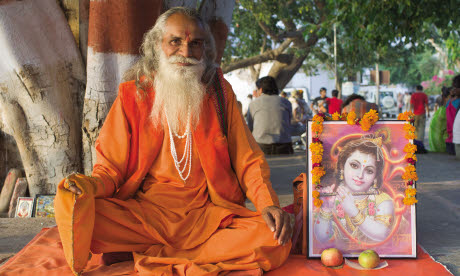
Forget moody portraits and brooding landscapes – celebrate the world’s wonders! Steve Davey helps you add some positivity to your photography
It is a beautiful world out there: incredible places, vibrant people, amazing wildlife. Yet some travellers seem to think that for their pictures to be worthy, they have to be a bit miserable! What’s wrong with images that celebrate the wonders of our planet?
Part of achieving this is your approach: head out bubbling with enthusiasm, and you’ll take cheerier pictures. The people you photograph will pick up on this, too; smile, and you’re more likely to bring out a lighter side in them.
Taking cheerful travel images isn’t only about your state of mind – sometimes lighting conditions will be against you. You can rise early to avoid shooting in the middle of the day’s dull light, but sometimes you’ll need to employ pro techniques to make the most of the hazy low-contrast light.
Fortunately, shooting on digital gives you control of the white balance, as well as contrast and saturation. White balance is how your camera deals with the different colours of light. White light is seldom ‘white’ – it varies from cool-blue shadows to warm-red firelight. The white balance function can be used to alter these colour casts and warm up the image. Do this in post-processing if you’re shooting RAW; if you’re shooting JPEGs, select the ‘Cloudy’ or ‘Shade’ settings to warm the image.
Polarising filters can be used to reduce reflections and saturate colours – to make blue skies bluer and water or foliage richer. A polarising filter will often have no effect: to test it, look through it and rotate it. If you see a positive effect, stick it on your camera and rotate it until you get the same result. Your camera will automatically adjust for the changed exposure.
If you go overboard, you’ll end up with fake, weird images, but used sparingly, these techniques can make your photographic world a better place.
In some countries people will look deadly serious or even stand to attention when you go to take their picture. Break through this reservation with the strength of your own personality. Also, make sure the camera doesn’t create a barrier between you and your subject: most people become intimidated if you point a camera at them without any interaction, and your pictures will show someone looking uncomfortable.
1. Add more punch
If you take pictures in the middle of the day, or when it’s dull and overcast, your images can be flat. Give them punch in post-production: increase the white balance slightly to warm them up, and increase the contrast and saturation to give them oomph.
2. Use fill-in flash
Deep shadows can give images a heavy atmosphere, which can bring down the mood – especially if they’re obscuring someone’s face. A fill-in flash can lighten the shadows and brighten the picture. A reflector over the flash will make the fill-light softer and less obvious.
3. Warm it up
To bring out the beauty of a beach’s tropical turquoise, combine a polarising filter with warming up the white balance (or use the ‘Shade’ setting). This effect is more pronounced closer to the middle of the day, when the sun’s overhead.
4. Get polarised
To give your pictures more zing: try a polarising filter. Tiny reflections from water, foliage and droplets in the sky will reduce saturation and contrast, making pictures look flat; a polarising filter reduces these reflections, making the colours more vibrant.
1. If you only remember one thing…
A large part of creating happier pictures is the frame of mind with which you approach the subject. If you are happy and engaged then your images will be happier and more engaged.
2. Technical tip…
Punch up your picture by adjusting the contrast and colour saturation levels. This is best done on your computer afterwards. Most software will have an auto enhance function that will have a good stab at doing this for you!
3. One for the kitbag…
A polarising filter can cut down on reflections from foliage and water; making their colours appear richer and more saturated (and therefore cheerier). Simply look through the filter and rotate it to gauge the effect.